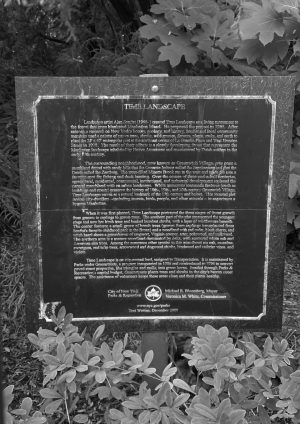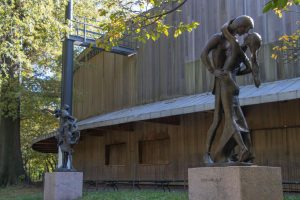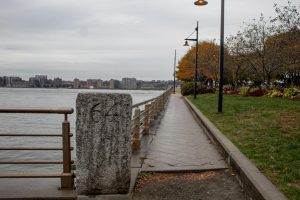Central Park in Popular Media
A look at all the sites within the park that have been featured in movies, television and more
November 7, 2022
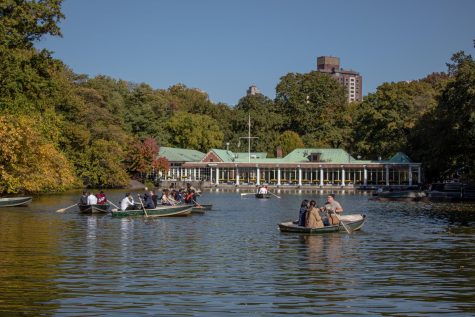
Central Park is one of the most iconic parks New York City has to offer. Spanning about 776 acres, the park is filled with wonder, consisting of a variety of green spaces, restaurants and tourist locations that are perfect if you’re there to exercise, hang out with friends or sightsee.
Central Park opened its gates in 1858 — five years after its proposal, originally titled “Greenwards Plan” — with construction finishing nearly 20 years later in 1876. By the beginning of the 20th century, the park was deteriorating. There was an effort in the 1930s by urban planner Robert Moses to restore the park. By 1980, the Central Park Conservatory was created, renovating the park to give it the charm it holds today.
And of course, is it really a New York staple if it isn’t featured in films? Central Park retains its status as one of the most filmed locations in the world, being credited in 532 films, ranging from hippie musicals, to rom-coms, to a classic ghost-hunting film.
Though not all 532 films will be mentioned, this article will cover some films that have featured some of the most well-known spots of Central Park.
Tavern on the Green
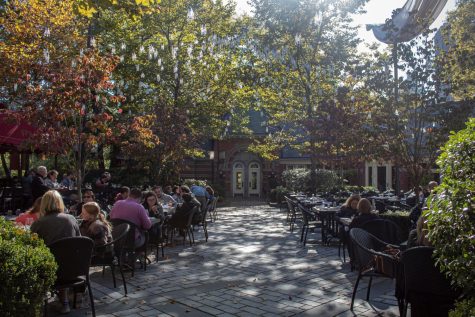
Entering from 66th Street, a small but long red building that once housed a sheepfold and barn lies in between a busy Upper West Side street and the greenery of Sheep Meadow. Tavern on the Green is an American restaurant that’s been in operation since 1934. After 75 years, Tavern on the Green closed its doors in 2009. However, by 2014 (and after a hefty multimillion-dollar renovation), the restaurant reopened in all its glory.
The inside of the restaurant pays homage to classic 1930s Americana with a beautiful outdoor dining area that offers gorgeous views of the park. However, the restaurant is not commonly known for being a safe haven — especially for Louis Tully (Rick Moranis), a character in the 1984 hit film “Ghostbusters.” In one scene, Louis is seen running away from a demon, Vinz Clortho, and finds the restaurant, with the hope that it will serve as a form of refuge. His pleas to enter the restaurant were unheard, and he was eventually attacked as onlookers watched nonchalantly and continued with their business.
The 1987 film “Wall Street” depicts Tavern on the Green in a different light. Toward the end of the film, a disheveled and rain-drenched Bud Fox (Charlie Sheen) walks into the restaurant after a fistfight with Gordon Gekko (Michael Douglas), a Wall Street player and Bud’s own hero, with the 1980s-esque facade prominently displayed in the background.
Strawberry Fields
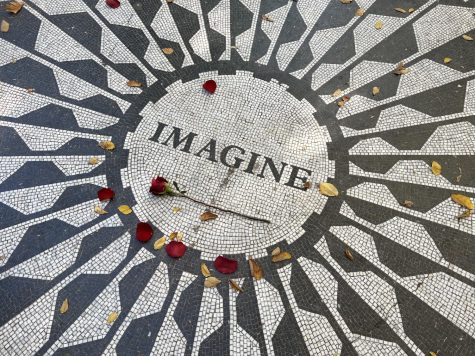
The first stop on my tour of Central Park was Strawberry Fields, where I was able to view the Imagine Mosaic designed for the late classic rock star and Beatles member, John Lennon. As someone who has been a fan of classic rock for quite some time now, this was a must-see for me. Located on West 72nd Street, Strawberry Fields is a landscaped section of the park designed by architect Bruce Kelly. Construction on the area began in 1984, and the land was officially dedicated to Lennon on October 9th, 1985, which would have been his 45th birthday. Lennon’s memorial is just one of many tributes within Central Park, with others being dedicated to Beethoven, Duke Ellington, and a number of other well-known musicians.
The mosaic itself is in the shape of a circle on the ground within Strawberry Fields, with its design resembling that of Portuguese pavement. It was certainly a beautiful sight to behold, with crowds gathering around it to take pictures and pay their respects with flowers. I sat in silence and watched the excitement for a while, listening to a man nearby performing some of The Beatles’ most popular hits. Although this part of the park is intended to be a quiet space, it was a nice tribute to the musician to be playing his songs in such a space. One specific film that featured the Imagine Mosaic was “New York, I Love You,” a romance movie released in 2008 that tells the story of different citizens of New York finding love in different ways. While nothing like this occurred while I was visiting, there were still many couples and groups of loved ones sharing their experience at the memorial with one another.
Sheep Meadow
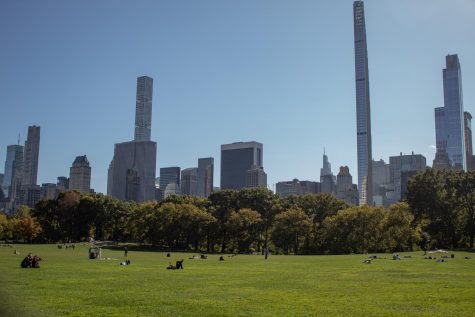
Due to its expansive greenery, Sheep Meadow is not only known as a classic hangout spot for picnics and birthday parties but also for its large-scale demonstrations, having been used previously for concerts, political rallies and protests. At one point, Sheep Meadow was known simply as a sheep farm — hence the name.
The 15-acre lawn has proven to have various uses, even as a prime filming location. During the musical number “That’s How You Know” from the 2007 film “Enchanted,” main character Giselle (Amy Adams) is seen singing through the park alongside street performers and parkgoers that suspiciously know how to dance and sing to the song. In one part of the scene, Giselle is seen having a picnic at Sheep Meadow with love interest Robert Philip (Patrick Dempsey) — alongside dancers, singers and a marching band.
Furthermore, in the 2004 film “13 Going on 30,” characters Jenna Rink (Jennifer Garner) and Matt Flamhaff (Mark Ruffalo) are at Sheep Meadow when Jenna hires him to shoot for her magazine, Poise. As the yearbook-inspired photoshoot goes on, a hint of love is sprouted between the two as Liz Phair’s “Why Can’t I” plays in the background.
Conservatory Water
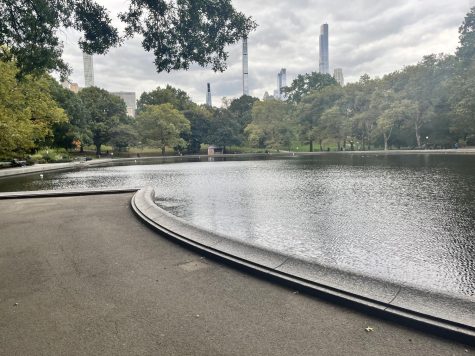
I made a stop at the Conservatory Water, which was featured in one of my all-time favorite romance films, “13 Going on 30.” The water makes its appearance in a scene where protagonist Jenna Rink is eating an ice cream cone on a stroll through Central Park and stops to pet some dogs along the way. The ornamental pond featured in this area of the park is actually called the “Model Boat Pond,” known for being a spot for children and even those of the older generation to race model sailboats. This pond was actually a naturalistic waterlily pond back in the mid-19th century when the park was first built. However, it was later reformed to become the pond we know today.
Surrounding the water are two famous monuments within the park – the “Alice in Wonderland” statue and the monument for children’s book author Hans Christian Andersen. My time at the water was short, as it was beginning to get gloomy and chilly out. However, this was probably the most serene experience I had during my entire tour of Central Park. There were not many people around, which was nice when it came to capturing pictures and just taking in the scenery. Though this was definitely the most underwhelming of the landmarks that I visited, it was still a nice sight, and knowing the history behind it made it even more interesting.
The Mall and Literary Walk
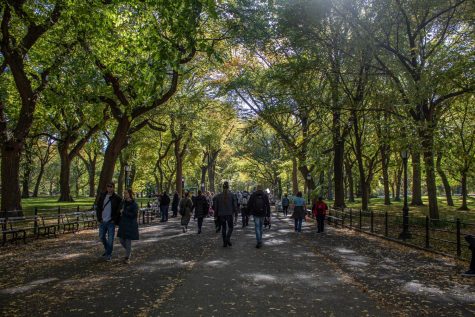
The Mall and Literary Walk — not to be confused with a shopping mall — is a long esplanade surrounded by American elm trees, street vendors selling their artwork or snacks, and visitors people-watching on benches. It was originally created for carriages to be able to pick up people at Bethesda Terrace, whose scenery also garners much interest. This stretch was designed by the creators of Central Park’s original plan: Frederick Law Olmsted and Calvert Vaux.
In the 1979 film “Kramer vs. Kramer,” we witness a heartwarming scene — amid the onslaught of divorce — between father and son Ted (Dustin Hoffman) and Billy Kramer (Justin Henry), as Ted teaches Billy how to ride a bicycle through the Mall. Throughout the film, Ted, a workaholic, must learn how to find time for his son after the sudden departure of his wife.
On the topic of children, in the 1999 film “Big Daddy,” we witness yet again another affectionate scene between Kevin Gerrity (Jon Stewart) and his biological son Julian McGrath-Gerrity (Dylan and Cole Sprouse), playing around in the Mall together as Kevin’s roommate Sonny Koufax (Adam Sandler) watches.
These films shot at the Mall and Literary Walk illustrate that the area is the perfect place for family bonding.
Central Park Carousel
The Central Park Carousel is one of the oldest carousels in the United States and is a pillar of the park, having been remodeled and redone four times since its opening in 1871. While once a bustling part of the park’s Children’s District, the Central Park Carousel stands today as more of a relic overshadowed by what it has famously appeared in than a genuine amusement ride.
J.D. Salinger’s novel “The Catcher in the Rye,” a story so well known for its depiction of adolescence, features the carousel, and it has come to represent that same adolescence as well. As Holden Caulfied watches his sister Phoebe on the carousel and realizes the ride still plays the same song from when he was a kid, Holden finally comes to terms with what it means to grow up and move on. While the exact carousel described in the novel burned down in 1950, the image of reclaimed childhood and easygoing innocence that the carousel now represents still stands.
Naumburg Bandshell

The Naumburg Bandshell was once the prime-time spot for free outdoor classical music concerts, when the Naumburg Orchestral Concerts, which was founded in 1905, used to continuously hold concerts there during the summer. Throughout the latter half of the 20th century, the Naumburg Bandshell began to deteriorate, expected to be torn down by 1989. In 2021, the Central Park Conservatory began plans to restore it.
Naumburg Bandshell is a musically-inclined place — after all, a scene from a musical was filmed here. In the 1979 film “Hair” (based on the 1968 Broadway musical of the same name), main character Claude Bukowski (John Savage) wakes up at the Bandshell after a long night of drugs, dancing and singing musical numbers. He looks at his surroundings and exits before being stopped by hippie George Berger (Treat Williams).
In the 1961 film “Breakfast at Tiffany’s,” the Bandshell also gets a taste of exposure — and so does Holly Golightly’s (Audrey Hepburn) life — as love interest Paul Varjak (George Peppard) speaks to Doc Golightly (Buddy Ebsen), who reveals himself as Holly’s husband and explains that Holly’s real name is Lula Mae Barnes.
Bethesda Terrace
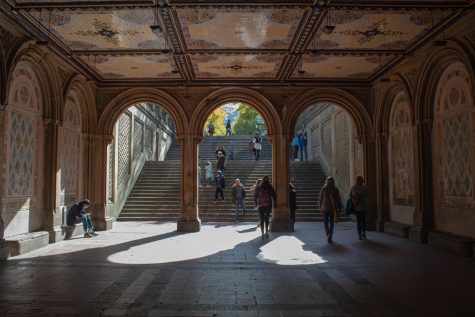
The Bethesda Fountain and Terrace, which overlooks the sprawling Central Park Lake, is a monument revered for its open layout and relaxing waters. The opening of the fountain commemorated the creation of the Croton Aqueduct, which brought the first fresh water to NYC in 1842. The highlight of this accessible space comes through the form of the iconic Angel of the Waters statue, designed by Emma Stebbins in 1868. The statue features a looming bronze angel standing tall above four smaller cherubs, and the five figures seem to hold the gaze of each passerby who walks past the fountain.
In the hit British television show “Doctor Who,” the unmovable stares of these icons are played up, as the Doctor (played by “House of the Dragon” actor Matt Smith) and his companions must flee the gaze of these angels in the episode “The Angels Take Manhattan.” Through transforming the Angel of the Waters figures into a terrifying villain, “Doctor Who” plays up the stoic, unyielding nature of the statues that have long occupied the ever-changing NYC landscape.
Other than its beauty, the Bethesda Terrace is notable for another reason: It is the site of the first American film version of “Romeo and Juliet.” Released in 1908, it was filmed entirely in the terrace. Unfortunately, the silent film is now considered a piece of lost media, with only one photograph still in existence.
The terrace became identifiable once again 84 years later, when it — among other New York City destination spots — became the setting to the 1992 film “Home Alone 2: Lost in New York.” In the scene, Kevin McCallister (Macaulay Culkin) is seen running away from the antagonists, Harry and Marv (Joe Pesci and Daniel Stern). Kevin then hides in a suitcase inside of a horse-drawn carriage, outrunning them both.
Another comedy film, the 2003 film “Elf,” also featured the Bethesda Terrace. The title character (Will Ferrell) is seen inside of Santa Claus’ (Edward Asner) sleigh as he flies through Central Park. After hitting the wing of the Angel of the Waters fountain, they nearly escape death. The sleigh is later seen hitting the top of the terrace, frightening a man sleeping on the bench, wondering what could have possibly happened.
The Loeb Boathouse
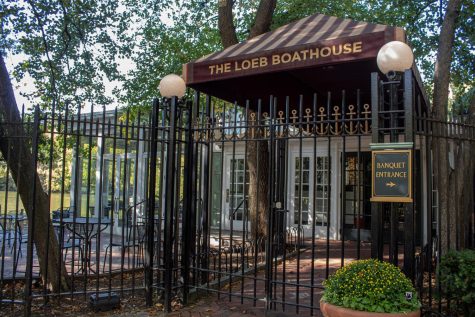
The Loeb Boathouse is an American restaurant known for its scenic lakeside views and fine-dining experience that opened in 1954. The Loeb Boathouse closed for good this month after remaining an immensely popular institution within Central Park for decades, representing a major shift in the landscape within the park as the upkeep of expensive restaurants begins to outweigh the profits.
The Loeb Boathouse has been featured in classic pieces of NYC media, serving as a space for stories to indirectly tell the audience that a character has their life together in the city. In the 1989 rom-com “When Harry Met Sally,” the Loeb Boathouse acts as the setting for Sally’s relationship check-ins with her friend Marie, two characters that are thriving professionally but down-on-their-luck emotionally. The restaurant they occupy acts as the movie’s nod to the wealth Sally and Marie both live with and how that wealth doesn’t necessarily translate to romantic happiness. Sally, Marie and the Loeb Boathouse mirror the concerns of a more carefree and bygone generation.
Bow Bridge

The Bow Bridge stands out in the crowd; wherever you go in Central Park, you are sure to catch a glimpse of it. The cast iron bridge, which overlooks the Lake, was built in 1862. Walking over it offers a good view of visitors canoeing, geese walking around and parkgoers enjoying nature. The bridge was restored in 1972 due to deterioration.
Though the view from the Bow Bridge is nothing but beautiful, sometimes not-so-beautiful things can occur. For instance, in the 2007 film “Spiderman 3,” Peter Parker (Tobey Maguire) is unexpectedly broken up with after bringing his girlfriend Mary Jane Watson (Kirsten Dunst) some flowers. Though Peter Parker’s tears have been meme-ified, the scene still hits home.
Other than sad scenes in the Bow Bridge, we also have mildly gross scenes. In the 2003 film “Uptown Girls,” Molly Gunn (Brittany Murphy) runs through Bethesda Terrace before arriving at the bridge. As she looks solemnly to the lake, she gets on top of the bridge and jumps into the water. Nearby, an elderly woman yells at her to get out of the contaminated water, as Molly sees her arm tangled in some old sneakers.
Next time you visit Central Park, make sure to keep an eye out for any spots that have been filmed — you never know what sites are shown in your favorite movie!

